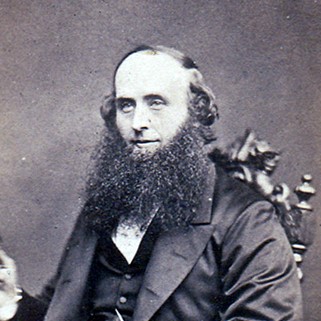
1825 - 1865
Edward William Pritchard
Summary
Name:
Edward William PritchardYears Active:
1863 - 1865Birth:
December 06, 1825Status:
ExecutedClass:
MurdererVictims:
2-3Method:
PoisoningDeath:
July 28, 1865Nationality:
United Kingdom
1825 - 1865
Edward William Pritchard
Summary: Murderer
Name:
Edward William PritchardStatus:
ExecutedVictims:
2-3Method:
PoisoningNationality:
United KingdomBirth:
December 06, 1825Death:
July 28, 1865Years Active:
1863 - 1865Date Convicted:
July 7, 1865bio
Edward William Pritchard was born on 6 December 1825 in Southsea, Hampshire, into a naval family—his father being Captain John White Pritchard. He claimed to have graduated from King’s College Hospital in 1846 and served as an assistant surgeon in the Royal Navy aboard HMS Victory and other ships over the next four years.
Upon returning to Portsmouth on HMS Hecate, Pritchard met and married Mary Jane Taylor in 1851, daughter of silk merchant Michael Taylor of Edinburgh. The couple would go on to have five children. After his navy career, he practiced medicine as a general practitioner in Yorkshire—initially in Hunmanby—writing books about his travels and “water cure” methods and contributing articles to The Lancet.
However, in 1859, under a financial cloud and owing debts, he relocated to Glasgow to set up anew. In May 1863, a fire on Berkeley Terrace in his home killed servant girl Elizabeth McGrain under very suspicious circumstances, but no charges were brought.
murder story
In May 1863, at the Pritchards’ home on 11 Berkeley Terrace, Glasgow, a fire erupted in the room of their servant girl, Elizabeth McGrain, aged 25. What made the incident chilling was that she made no attempt to escape—suggesting she might have been unconscious, drugged, or already dead before the blaze even started. Though the procurator fiscal investigated, no charges were ever brought—raising suspicions that Pritchard had orchestrated the incident to silence or eliminate someone privy to his dark secrets.
Fast forward to February–March 1865. Pritchard, now practicing in Glasgow at 131 Sauchiehall Street, tended to his wife, Mary Jane, who began suffering from recurring bouts of vomiting, cramps, and glaring lethargy—symptoms that seemed to improve whenever she visited her family in Edinburgh ➡ then worsen immediately upon return. Concerned, her mother, Jane Taylor, came to help nurse her. Within weeks, she too mysteriously fell ill and died—believed to be on 25 February 1865 in one account, although official recorded date is 28 February.
Mary Jane’s own decline followed quickly: she died on 17 March 1865 (some sources say 18 March). Once again, Pritchard was the attending physician. He certified both deaths—labeling Jane Taylor’s as “paralysis and apoplexy” and his wife’s as “gastric fever”—even though doctors called in, like Dr. Paterson, refused to sign off on the certificates, noting the causes as suspicious.
In truth, Pritchard had used his medical knowledge and trusted appearance to poison both women cumulatively using antimony and aconite, administered in food items like tapioca, cheese, and even "egg‑flip"—all carefully dosed to mimic a fatal illness. He also positioned himself as the caring husband: at Mary Jane’s funeral, he reportedly demanded that her coffin be reopened so he could kiss her one last time.
Suspicion mounted after an anonymous letter reached the Procurator Fiscal, prompting exhumations and post‑mortem examinations in Edinburgh. Forensic experts—including Dr. Douglas Maclagan and Dr. Henry Duncan Littlejohn—found antimony widely distributed in the organs of both victims. They also tested medicines found in the house, confirming that commonly used opium solutions had been spiked with aconite, clear evidence of foul play..
Additionally, it emerged that Pritchard was entangled in a sordid affair with a 15-year-old servant, Mary MacLeod, whom he had impregnated and promised to marry should his wife die. He had even carried out an abortion for her. The defense tried to blame her for the murders, but evidence showed that Pritchard personally delivered food to his victims and worse, two staff members who sampled his wife's food fell ill—another nail in his coffin.
After a five-day trial in Edinburgh in July 1865, Pritchard was convicted and sentenced to death. He wrote a final confession, admitting he alone poisoned the women and absolving Mary MacLeod, stating his actions stemmed from “a species of ‘terrible madness’ and the use of ‘ardent spirits’”. On 28 July 1865, at around 8 a.m., Dr. Pritchard was publicly hanged at Glasgow Green.